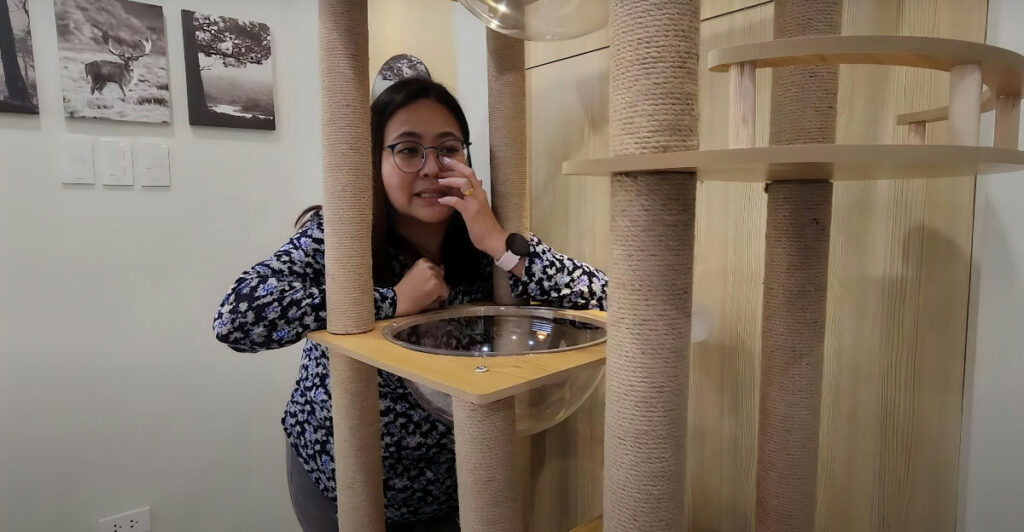
Creating a welcoming and safe environment for your feline friend can improve their happiness, reduce stress, and encourage healthy behaviors. While cats may appear independent, they have unique needs that require attention. These ten tips, based on the latest veterinary research, provide easy ways to make your home cat-friendly, whether you’re a new cat parent or looking to enhance your cat’s current space.
1. Create Vertical Spaces

Cats are natural climbers who feel safer when they can observe from high vantage points. Adding cat trees, shelves, or tall furniture helps fulfill their instinctual need to survey their environment. If a bulky cat tree doesn’t fit your decor, look for wall-mounted shelves designed for cats. These high perches offer security, encourage exercise, and can be arranged to create fun pathways across your walls.
2. Add Hiding Spaces

Providing a variety of hiding spots around your home helps your cat feel safe and secure. While there are many stylish cat beds and enclosed condos on the market, cats are often just as happy with DIY solutions. Shoeboxes, baskets, or small cat tents in different rooms allow them to retreat when they want quiet time. These hideaways can reduce stress, especially if you have guests over or other pets in the home.
3. Provide Enrichment Toys

Cats are hunters by nature, and interactive toys keep their minds active and bodies engaged. Toys that mimic the thrill of catching prey, like feather wands and motorized mice, can provide mental stimulation. Additionally, treat puzzles or toys with hidden snacks challenge your cat’s problem-solving skills and help prevent boredom. Rotate toys every few weeks to keep things fresh and exciting.
4. Offer Multiple Litter Boxes

Cats are usually clean and particular about their litter boxes. The rule of thumb is to provide one box per cat plus one extra. Place these in low-traffic areas for privacy and make sure they’re easily accessible. Some cats are also selective about the type of litter used, so you may need to try a few options before finding the perfect match. Regular cleaning is essential, as a clean litter box helps prevent accidents around the home.
5. Separate Feeding and Water Areas

In the wild, cats don’t eat and drink in the same spot, and they often prefer this separation at home, too. Use separate bowls for food and water, and avoid placing them side by side. Some cats enjoy exploring for their food, so consider placing bowls in different rooms or even hiding treats to encourage “hunting” behavior. Automatic feeders with timers can be helpful if you’re away during the day.
6. Set Up Scratching Posts

Scratching is a natural behavior for cats, helping them to mark territory, release stress, and keep their claws healthy. Offer multiple scratching posts around the house and experiment with different textures like sisal, cardboard, and carpet. Some cats prefer vertical scratching posts, while others enjoy horizontal scratchers. Placing scratchers near favorite spots, such as the couch, encourages use and saves your furniture.
7. Create Observation Points

Cats enjoy watching the world go by, especially if they’re indoor-only pets. A cozy spot by the window gives them a safe way to observe birds, squirrels, and other outdoor activities. Cat perches, beds, or hammocks attached to windows can create the perfect lookout. If possible, consider adding a bird feeder near a window to create entertainment and stimulate their curiosity.
8. Establish a Routine

Cats are creatures of habit, and a consistent routine makes them feel secure. Try to feed, play with, and interact with your cat at similar times each day. Daily routines help with bonding and can even reduce stress-related behaviors. Set aside specific times for active play, mealtime, and quiet snuggles so your cat can learn what to expect and feel like part of the family.
9. Use Cat-Safe Scents

Cats have very sensitive noses, and some fragrances can be overpowering or even harmful. Avoid citrus, rosemary, and other strong scents that may be unpleasant or irritating. Instead, stick to scents cats love, like catnip or silver vine, which can be sprinkled on toys or scratching posts. Regular litter box cleaning is also crucial, as a clean environment reduces odors and encourages cats to use the box consistently.
10. Secure Potentially Dangerous Items

Cats are naturally curious and may chew, swat, or ingest household items that could be harmful. Keep all cleaning products, medications, and other potential toxins in secure cabinets. Be aware that certain plants, like lilies and philodendrons, are toxic to cats and should be kept out of reach or removed altogether. Install child-proof locks if necessary, and be mindful of small objects like string, buttons, or rubber bands that might pose a choking hazard.







